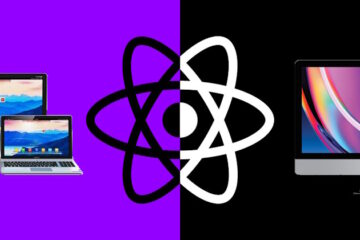Emerging as a cultural sensation, cryptocurrencies have soared to unprecedented heights in recent times, with Ethereum taking center stage as a pioneering force in the realm of decentralized applications and astute contractual arrangements. Nevertheless, the meteoric rise in Ethereum’s prominence has ushered in a chorus of apprehension regarding its ecological reverberations. This insightful piece ventures into the intricate web of energy expenditure and carbon emissions that intertwine with the intricate art of Ethereum mining, casting a spotlight on the profound environmental ramifications stemming from the Proof of Work (PoW) consensus mechanism. Additionally, it embarks upon a captivating journey of exploration, presenting potential alternatives such as the alluring prospects of Proof of Stake (PoS) and its potential to mitigate the ecological toll. For more information visit Ethereum Code official site.
Energy Consumption of Ethereum Mining
Ethereum mining is a resource-intensive process that requires significant computational power. Miners solve complex mathematical puzzles to validate transactions and add blocks to the blockchain. However, this process consumes a massive amount of electricity. Here’s a closer look at the energy consumption of Ethereum mining:
- Energy Intensity
Ethereum mining operates on a Proof of Work (PoW) consensus mechanism, which entails solving computational puzzles. This algorithmic approach demands substantial computational power and, consequently, high energy consumption. - Growing Energy Demand
As Ethereum gains popularity and attracts more miners, the network’s energy demands continue to surge. The more participants there are in the mining process, the more computational power and electricity are required.
Carbon Footprint of Ethereum Mining
Delving into the intricate dance between Ethereum mining and its ecological footprint reveals an entwined narrative of energy consumption and the carbon conundrum. As our planet continues to grapple with the dominance of fossil fuel-dependent energy production, these archaic power sources fuel a fiery symphony of greenhouse gas emissions, propelling the ominous specter of climate change ever closer. Brace yourself for an intimate exploration of the carbon-laden path treaded upon by Ethereum mining, as we embark on a journey through the intertwined realms of energy consumption and its environmental consequences.
- Fossil Fuel Dependence
Since most mining operations are not powered by renewable energy sources, the electricity used in Ethereum mining often comes from fossil fuels like coal and natural gas. This reliance on non-renewable energy contributes to carbon emissions and exacerbates environmental challenges. - Emissions Comparison
When compared to traditional financial systems, Ethereum mining’s carbon footprint is considerably higher. The energy-intensive nature of the PoW consensus mechanism results in a significant environmental impact.
Exploring Potential Alternatives – Proof of Stake (PoS)
Embarking on an intrepid odyssey of innovation, the Ethereum community finds itself on the cusp of a transformative voyage towards the shores of sustainability. Pondering upon the vast expanse of possibilities, a spirited exploration unfolds, as they set their sights on an alternative horizon: the enigmatic realm of Proof of Stake (PoS). In this realm, a harmonious dance ensues, where the tides of environmental impact are placated, and the luminous beacon of energy efficiency shines with resplendent brilliance. Like a gentle breeze that whispers through the ether, PoS emerges as a serene and environmentally conscious alternative, beckoning the Ethereum community to venture forth into uncharted territories of progress.Here are some key points to consider:
- Energy Efficiency
In a mesmerizing departure from the arduous realm of Proof of Work (PoW), the celestial realm of Proof of Stake (PoS) gracefully unfolds. Here, the labyrinthine riddles that once demanded miners’ sweat and toil are replaced by a sublime orchestration of a different kind. It is a realm where the chosen few, adorned with an abundance of coins and a willingness to embark upon the wondrous act of “staking,” ascend to the esteemed position of block validators. A symphony of elegance emerges as the need for energy-devouring computations gracefully fades away, casting a radiant halo upon the network’s energy consumption. Like a mythical phoenix rising from the ashes, PoS unveils a splendid paradigm shift that bathes the Ethereum ecosystem in newfound efficiency and resplendent harmony. - Reduced Carbon Footprint
With PoS, Ethereum’s energy requirements are substantially lower, which allows for a transition to renewable energy sources. By reducing the reliance on fossil fuels, the carbon footprint associated with Ethereum mining can be significantly reduced. - Scalability and Security
In addition to its environmental benefits, PoS also offers improved scalability and security for the Ethereum network. The elimination of miners and energy-intensive computations allows for faster transaction processing and reduces the risk of centralization.
The Importance of Sustainable Mining Practices
- E-Waste Management
Cryptocurrency mining also generates electronic waste (e-waste) due to the constant need for upgrading mining hardware. It is crucial for miners and the Ethereum community to prioritize responsible e-waste management by recycling and properly disposing of outdated mining equipment. This will help minimize the environmental impact of mining operations. - Collaboration with Renewable Energy Providers
To reduce the carbon footprint of Ethereum mining, collaboration with renewable energy providers is essential. By partnering with renewable energy projects or investing in their own renewable infrastructure, miners can ensure that their operations are powered by clean energy sources, further promoting sustainability in the cryptocurrency industry. - Public Awareness and Education
Raising public awareness about the environmental impact of Ethereum mining is crucial. Educating users, investors, and the wider community about the energy consumption and carbon footprint associated with cryptocurrencies can foster a sense of responsibility and encourage the adoption of sustainable practices. This can be done through educational campaigns, transparency in reporting energy usage, and promoting eco-friendly initiatives within the Ethereum ecosystem. - Technological Innovations
Continuous technological advancements can contribute to reducing the environmental impact of Ethereum mining. Research and development efforts focused on optimizing mining algorithms, improving energy efficiency, and exploring alternative consensus mechanisms can pave the way for greener and more sustainable mining practices.
Conclusion
In the ethereal tapestry of Ethereum mining, whispers of environmental reverberations stir unease, yet within this paradox lies a seed of potentiality. Behold, for solutions lie on the horizon, poised to navigate the delicate balance between progress and planetary stewardship. As the symphony of transformation unfolds, the transition from the hallowed halls of Proof of Work (PoW) to the fertile grounds of Proof of Stake (PoS) emerges as a harbinger of sustainability and energy-conscious virtue. Through the alchemy of reduced energy consumption and the emancipation from fossil fuel dependencies, Ethereum dances upon the precipice of transformation, poised to etch its mark upon a verdant tapestry of environmental respite. In embracing this noble charge, Ethereum ushers forth a ripple of hope, contributing its part in the grand tapestry of a greener future.




1 Comment
Hive's integration with other blockchain platforms and ecosystems - Living Gossip · July 12, 2023 at 6:56 am
[…] In the rapidly evolving world of blockchain technology, interoperability and collaboration between different platforms and ecosystems have become crucial. Hive, a decentralized blockchain and social media platform, has emerged as a prominent player in this space. With its unique features and emphasis on community-driven development, Hive has fostered integration with other blockchain platforms and ecosystems, leading to enhanced functionality and expanded opportunities for users. This article delves into the seamless integration capabilities of Hive and its impact on the broader blockchain landscape. Know more about the Impact of Ethereum Mining. […]